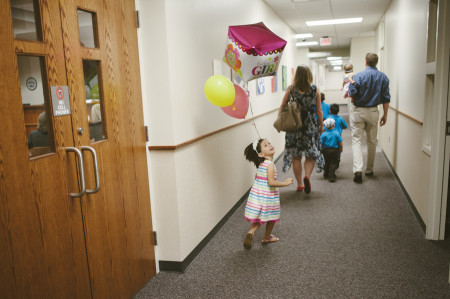Thank you to everyone who read and shared my post on the new Nebraska foster family size regulations. An especially big thanks to those of you who have contacted somebody you thought could do something about it. Your voice was heard. I got a call from someone at DHHS on Friday to discuss the letter and the concerns they were hearing expressed. I want to share with you the gist of that conversation, and what action steps you can take to be sure your voice is heard on this issue.

Photo by Love Equals Photography
The DHHS response:
There are many reasons to complain about a “broken system” when it comes to child welfare, but the conversation I had with the DHHS employee (who is on the committee charged with rewriting this law) reaffirmed what we have learned over our years of involvement with foster care– while the system may be broken, it is largely full of people who really do care. I think we have to remind ourselves of that when we get frustrated. Our frustration may be with bad laws that have tied the hands of people who are equally frustrated with the bad laws. That helps me be graceful and tactful even when I’m a little worked up.
Here’s what I learned from that conversation (please know this is all my layperson interpretation):
–This is not just a policy or regulation change, this is a law. Because it is a law, there may be some benefit to contacting your state senator to apply pressure. Let them know how this impacts your family or the families of people you know.
–DHHS was taken by surprise by the implementation of the law (it had originally been suggested a couple years ago, pretty much forgotten about, then the governor signed it right before leaving office) and is scrambling to figure out what this means for families and especially sibling groups. This explains why we didn’t have advance notice and why agencies were caught off guard as well.
–There is already a rewrite in progress. DHHS realizes this is going to have a negative impact, particularly on sibling groups and that needs to be addressed. I did not sense that there was a lot of openness to reconsidering the family size limits outside of the sibling issue, so we still need to make our concerns known on that point.
While the conversation I had was clarifying, it did not answer my biggest question— Why? Why now? Why these numbers?
I asked if these changes were based on some sort of data. The person I spoke with couldn’t point me towards any studies that supported the changes in numbers. The answer was that maybe (apparently the people who drafted the original proposal several years ago are no longer around at DHHS so it is difficult to know for sure what the motivation was) it was based on concerns about adoption disruptions happening in the middle school years from kids who had large families. (“Disruption” is an adoption term that means a family is no longer able to care for the child they adopted.)
I feel this is a backwards approach to creating guidelines that impact so many families. If we see there are disruptions happening, then we need to be doing a better job at providing education and support. Families need to have more resources provided to them when there are problems. They need to have full knowledge of what problems may exist down the road when you adopt a child from foster care who has been abused, neglected, and/or has had prenatal drug and alcohol exposure. In my opinion, it may not be that the reason these kids are disrupting is because they are in large families, but because they are kids who have issues (and maybe this large family was the only one willing to commit to them and without them they would have ended up being raised in a group home or in jail). Limiting family size may mean we have less kids disrupting from large families, but I’m not sure it will mean we actually have less kids with issues or even less kids that disrupt. I have seen disruption happen in all kinds of families and it is heartbreaking every time. I think there are times that could have been prevented by better preparation, more support and more resources available to the family. At the heart of the disruption situations I know about there is one common factor and it isn’t family size– it’s a very troubled child.
I asked the person I spoke with about what the data looked like as far as the number of kids that disrupt from larger families vs. small families. There wasn’t an answer. I asked about the data regarding the number of large families that have a disruption vs. the number of large families that don’t. There wasn’t an answer. It’s possible DHHS is looking at the families they come in contact with– families who have a child that reenters foster care– and not looking at how many times that doesn’t happen and placement in a large family is stable and optimal for a child.
I asked about what will happen to kids as we eliminate so many foster homes. My concern is that more children will end up in group homes or without permanency. There were a couple potential solutions brought up. Family Finding may be an option, but we are not currently funding Family Finding at a level where we can offer it to as many kids as would need it. Some families (like mine) could become “kinship homes” or “child specific” homes for the siblings of our previously adopted children. This would allow us to sidestep the licensing regulations. In my opinion, that is a frustrating solution. Why would we make it easier for families to take more children than DHHS is saying is healthy or ideal as long as they are not licensed? This means more kids in homes that haven’t gone through training and that potentially don’t have agency support to handle the challenges that come along. This may make the numbers look better for DHHS as far as how many kids are in foster home placements, but is it really making life better for the kids if we’re willing to place more kids in less educated, less accountable, less supported families? I have my doubts.
Action Steps
I think DHHS needs to hear from foster families who will no longer be able to take on new placements. They need to hear from biological families who would have seen their children separated under this new law. They need to hear from families who have adopted or have previously fostered more children than would be allowed by this law. They need to hear from families who had considered foster parenting and now won’t be able to. They really just need to hear from anybody who is concerned about the implications.
Here is how you can make your voice heard:
-Contact your state senator and the senators on the Health and Human Services committee. Pass along my previous post along with your personal story of how this impacts your family.
-DHHS has a grievance form you can fill out. I have been told they will read and respond to any complaints about this policy change filed that way. Here is a link to the instructions and form.
-Email your concerns to dhhs.childrenandfamilyservices@nebraska.gov
-I have contact information for the person doing the proposed rewrites of the law. She is open to hearing from you, but didn’t want her information posted publicly. If you send me an email (amusingmaralee at gmail.com), I will connect you.
I believe children need families that are best able to meet their needs. DHHS and the agencies that train and license foster parents need to look clearly at the skill set of each family. They need to encourage them to set and enforce boundaries around how many kids they are able to take. Foster parents should not feel pressured into taking “just one more” if they do not have the ability to appropriately care for that child. Foster and adoptive parents need to be educated and supported as they work with children who struggle with the very real and serious issues that brought them into foster care. Families who realize they are in over their heads should not be pushed into adoptions they aren’t prepared for or made to feel guilty if they communicate that they can’t handle a child’s needs. I’m afraid some of those previous ways of handling foster parents have contributed to a culture where families took in kids they couldn’t handle and now a policy change is deemed necessary. Changing that culture isn’t going to happen by changing this law, but by empowering foster parents to know their abilities and by properly supporting them when there are issues. (I see a positive shift in that direction through the partnership with Right Turn that now exists for post adoption education and support.)
There are absolutely children that need to be the youngest in a family or the only child in a family or need a small family or a sibling group that should be the only kids in a home for the safety of everyone involved. Each placement decision needs to be based on what is best for a child, what will maximize placement stability, and what will make the best use of a foster family’s skills. But I believe we can still make those kinds of decisions while leaving open the option for larger families to be available for kids who will benefit from them. We can’t be about just filling open beds, but about looking at the total picture. This protects both the child and the foster family.
Let’s voice our concerns on behalf of the children who need healthy families (big or small) and the foster families willing to know their limits, be educated, be advocates, and care for the children entrusted to them.

2 Comments
Leave a reply →